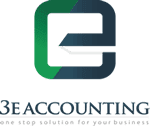Implementation of New Accounting Standards in Malaysia- the MFRS 9

Malaysian Accounting Standards Board issued the MFRS on 17 November 2014. It came into full effect starting 2018, along with the global implementation timeline. The new accounting standards under the MFRS have been expected to bring more accuracy while calculating financial assets, liabilities and other contracts for the buying and selling of non-financial resources.
How Does the MFRS 9 Differ from Previous Accounting Standards?
MFRS 9, which replaces the previous MFRS 139, mostly changes the manner for categorizing and calculating financial assets. The financial assets are classified on the basis of cash flow characteristics and business model tests. MFRS 9 also has made the impairment model more forward. It has also introduced new rules for hedge accounting to reduce loss volatility.
What Are the Three Major Areas That the New Accounting Standards in the MFRS 9 Change?
Financial Assets and Liabilities Classification and Measurements
Malaysian firms will have to classify their financial assets with respect to the business model and cash flow characteristics. Thus, as a business, you will have to go through all your investments and treasury mandates. You also need to conduct the MFRS 9 Business model tests on each of them. If the fair value (the estimated value of assets and liabilities) is applied to the accounting books, the business should record the changes to the fair happening due to the entity’s own credits.
Impairment Methodology
The MFRS 139 had the incurred losses model, which has been replaced by the expected credit losses model in MFRS 9. Under the credit losses model, every financial instrument’s loss allowance is recorded in terms of an amount equal to a 12-months expected, or a lifetime expected credit loss. The impairment methodology says that there should be more forward-looking information to reflect every financial instrument’s expected credit losses.
Hedge Accounting
The MFRS 9 fixes a lot of inconsistencies from the MFRS 139’s hedge accounting model. More risk management procedures have been introduced or the same. In previous times, applying hedge accounting would be almost impossible for some firms because of the risks and complexities, and that has been resolved with the MFRS 9.
How to Know if Your Company is Ready for New Accounting Standards?
Implementing MFRS 9 may be challenging for firms, especially those with a lack of prior experience or knowledge. These are the things that a company should be sure of before implementing MFRS 9.
- If the accountants, bookkeepers, or everyone involved in finances has good knowledge about the new requirements.
- The firm has the necessary workforce required to set up a project team, or train employees for planning and executing the changes.
- There is a necessary expertise to develop credit risk models.
- The company has the resources, including IT to help with the accounting process changes.
In case any one of the above returns a negative answer, you will need to take professional help to introduce the new accounting standards in your firm.
How Can 3E Accounting Help?
3E Accounting is a leading accounting and bookkeeping services provider in Malaysia with a global network. We have some of the best and most renowned accounting professionals from all around the world who have had experience working with policies similar to MFRS 9.
We first help you to strategise and plan on how you can implement the standards in your firm. Further, we can also assess your current environment and resources including gap analysis to find the changes that you need. Then, we will do the second stage of the planning to actually start implementing MFRS and finally help you with the model development. Such assistance would help you validate every accounting process in your organization in accordance with the MFRS.








